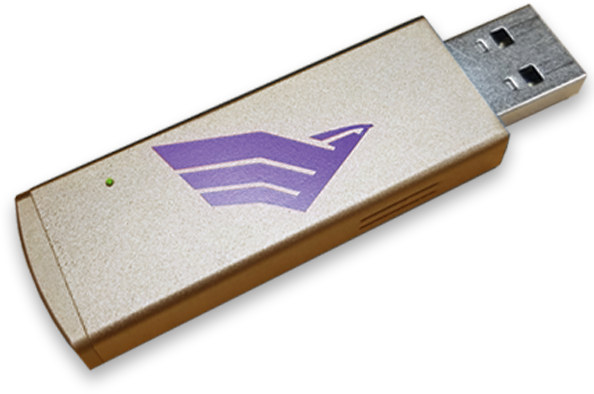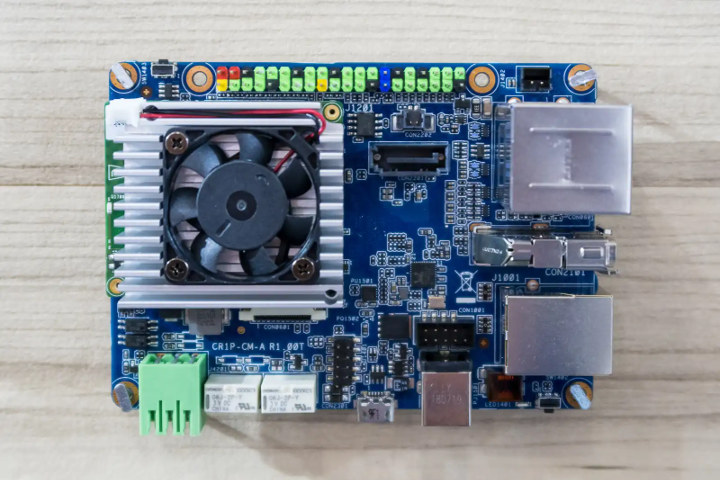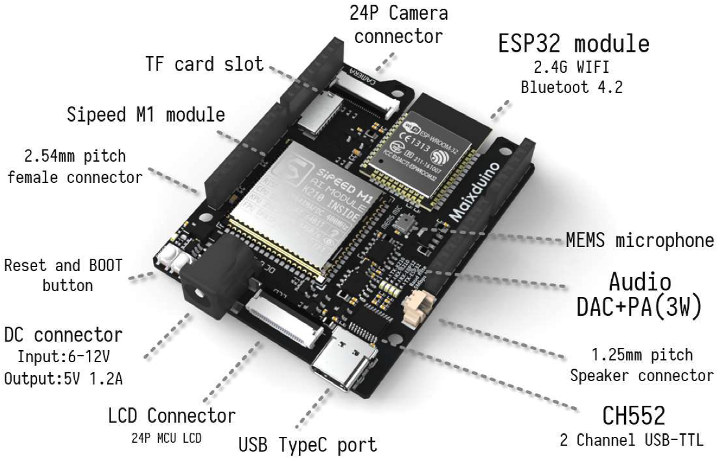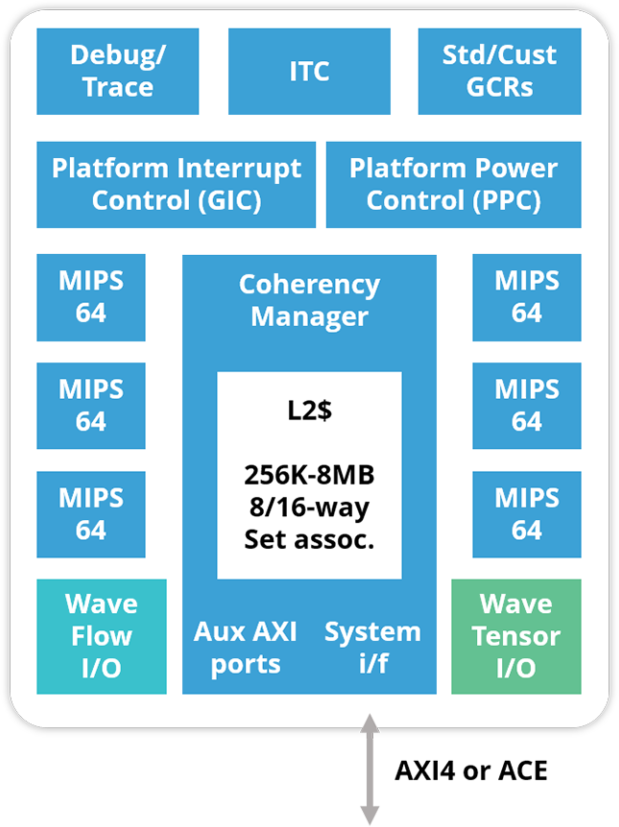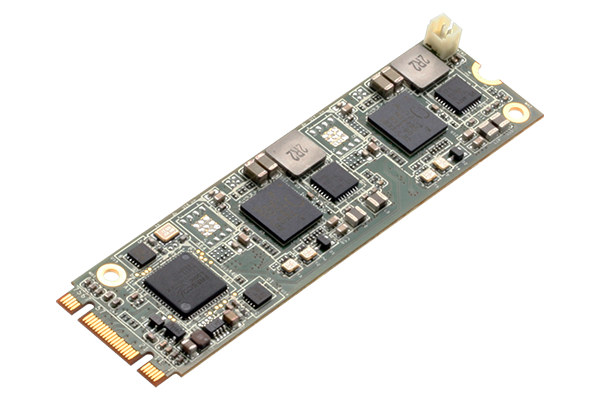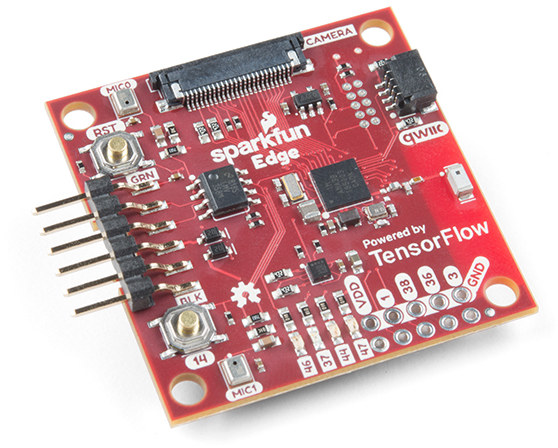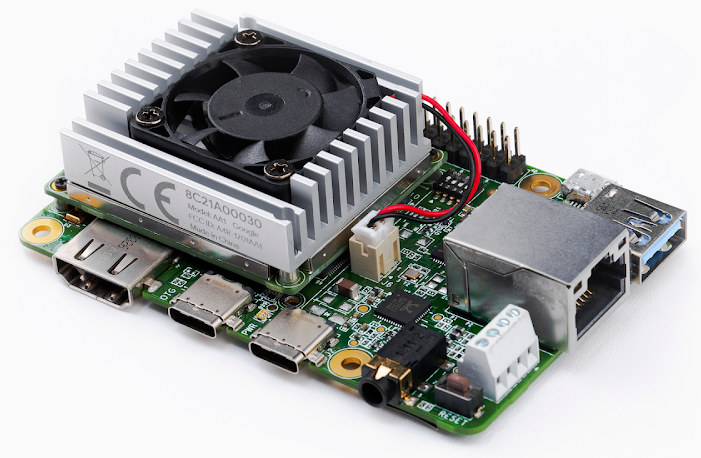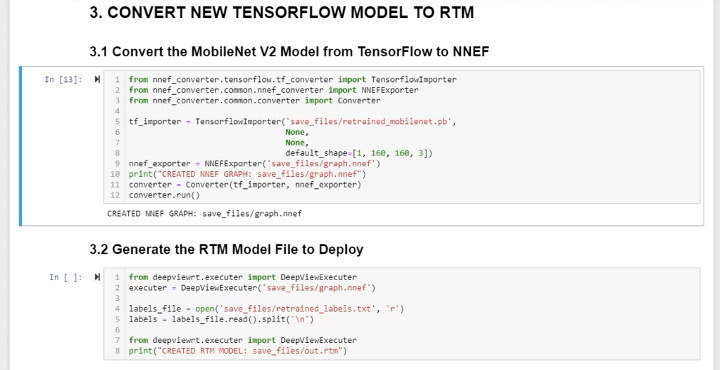Last year we covered an alternative to Intel Movidius Neural Compute Stick with Orange Pi AI Stick 2801 powered by Gyrfalcon Lightspeeur 2801S neural processor, and delivering up to 5.6 TOPS, or 2.8TOPS @ 300mW for $69. Since then Gyrfalcon introduced Lightspeeur 2803(S) AI accelerator delivering up to 24 TOPS, or 16.8 TOPS @ 700 mW. We’ve recently seen the new neural processor will be integrated into SolidRun i.MX 8M Mini & Nano systems-on-module, and today the company published a press release to announce their latest 2803 Plai Plug providing an upgrade to their existing 2801 Plai Plug (Orange Pi AI Stick 2801) for about the same $69.99 price tag. Gyrfalcon 2803 Plai Plug preliminary specifications: AI Accelerator – Gyrfalcon Lightspeeur 2803S with 2-dimensional Matrix Processing Engine (MPE) and AI Processing in Memory (APiM) Storage – eMMC flash Host interface – USB 3.0 port Power Consumption – 700mW at 16.8 […]
ASUS Tinker Edge T & CR1S-CM-A SBC to Feature Google Coral Edge TPU & NXP i.MX 8M Processor
A few months ago, Google introduced its Coral development board and USB accelerator powered by their Edge TPU delivering up to 4 TOPS and optimized for Tensorflow Lite. ASUS and Google have now partnered to bring more solutions powered by Coral Edge TPU namely ASUS Tinker Edge T board for makers and hobbyists, CR1S-CM-A SBC for industrial projects, and even a full computer fitted with a Google Edge TPU PCIe card. ASUS Tinker Edge T ASUS Tinker Edge T preliminary specifications: SoC – NXP i.MX 8M quad-core Arm Cortex-A53 processor with Arm Cortex-M4F real-time core, GC7000 Lite 3D GPU ML accelerator – Google Edge TPU co-processor System Memory – 1GB LPDDR4 RAM Storage – 8 GB eMMC flash Connectivity – Gigabit Ethernet port, Wi-Fi 2×2 MIMO (802.11b/g/n/ac 2.4/5GHz), and Bluetooth 4.1 Video Output – MIPI DSI connector, and HDMI output Camera I/F – 2x MIPI CSI 2 interfaces for stereoscopic […]
Maixduino SBC Combines RISC-V AI, Arduino Form Factor, and ESP32 Wireless Module
Last year RISC-V cores made it into low-cost hardware with neural network and audio accelerator to speed up artificial intelligence workloads at the edge such as object recognition, and speech processing. More precisely, Kendryte K210 dual-core RISC-V processor was found in Sipeed MAIX modules and boards going for $5 and up. Since then a few other variants and kits have been made available including Seeed Studio Grove AI HAT that works connected to a Raspberry Pi or in standalone mode. Seeed Studio has now released another board with Kendryte K210 RISC-V AI processor, but based on Arduino UNO form factor and equipped with an ESP32 module for WiFi and Bluetooth connectivity. Meet Sipeed Maixduino SBC. Sipeed Maixduino specifications: AI Module – Sipeed M1 with Kendryte K210 dual-core RISC-V processor @ 600 MHz, KPU Convolutional Neural Network (CNN) hardware accelerator, APU audio hardware accelerator, 8 MB general purpose SRAM including 5.9MB […]
MIPS Based TritonAI 64 AI IP Platform to Enable Inferencing & Training at the Edge
After announcing their first MIPS Open release a few weeks ago, Wave Computing is back in the news with the announcement of TritonAI 64, an artificial intelligence IP platform combining MIPS 64-bit + SIMD open instruction set architecture with the company’s WaveTensor subsystem for the execution of convolutional neural network (CNN) algorithms, and WaveFlow flexible, scalable fabric for more complex AI algorithms. TritonAI 64 can scale up to 8 TOPS/Watt, over 10 TOPS/mm2 using a standard 7nm process node, and eventually would allow both inference and training at the edge. The platform supports 1 to 6 cores with MIPS64r6 ISA boasting the following features: 128-bit SIMD/FPU 8/16/32/int, 32/64 FP datatype support Virtualization extensions Superscalar 9-stage pipeline w/SMT Caches (32KB-64KB), DSPRAM (0-64KB) Advanced branch predict and MMU Integrated L2 cache (0-8MB, opt ECC) Power management (F/V gating, per CPU) Interrupt control with virtualization 256b native AXI4 or ACE interface Here’s the […]
AI Core XM2280 M.2 Card is Equipped with two Myriad X 2485 VPUs
AAEON released UP AI Core mPCIe card with a Myriad 2 VPU (Vision Processing Unit) last year. But the company also has an AI Core X family powered by the more powerful Myriad X VPU with the latest member being AI Core XM2280 M.2 card featuring not one, but two Myriad X 2485 VPUs coupled with 1GB LPDDR4 RAM (512MB x2). The card supports Intel OpenVINO toolkit v4 or greater, and is compatible with Tensorflow and Caffe AI frameworks. AI Core XM2280 M.2 specifications: VPU – 2x Intel Movidius Myriad X VPU, MA2485 System Memory – 2x 4Gbit LPDDR4 Host Interface – M.2 connector Dimensions – 80 x 22 mm (M.2 M+B key form factor) Certification – CE/FCC Class A Operating Temperature – 0~50°C Operating Humidity – 10%~80%RH, non-condensing The card works with Intel Vision Accelerator Design SW SDK available for Ubuntu 16.04, and Windows 10. Thanks to the two […]
$15 Sparkfun Edge Board Supports Tensorflow Lite for Microcontrollers
The 2019 TensorFlow Dev Summit is now taking place, and we’ve already covered the launch of Google’s Coral Edge TPU dev board and USB accelerator supporting TensorFlow Lite, but there has been another interesting new development during the event: TensorFlow Lite now also supports microcontrollers (MCU), instead of the more powerful application processors. You can easily get started with Tensorflow Lite for MCU with SparkFun Edge development board powered by Ambiq Micro Apollo3 Blue Bluetooth MCU whose ultra-efficient Arm Cortex-M4F core can run TensorFlow Lite using only 6uA/MHz. SparkFun Edge specifications: MCU – Ambiq Micro Apollo3 Blue 32-bit Arm Cortex-M4F processor at 48MHz / 96MHz (TurboSPOT) with DMA, 1MB flash, 384 KB SRAM, 6uA/MHz power usage, Bluetooth support. Connectivity – Bluetooth LE 5 (on-chip) + Bluetooth antenna Camera – OV7670 camera connector Audio – 2x MEMS microphones with operational amplifier Sensor – STMicro LIS2DH12 3-axis accelerometer Expansion – Qwiic connector, […]
Google to Launch Edge TPU Powered Coral Development Board and USB Accelerator
Several low power neural network accelerators have been launched over the recent years in order to accelerator A.I. workloads such as object recognition, and speech processing. Recent announcements include USB devices such as Intel Neural Compute Stick 2 or Orange Pi AI Stick2801. I completely forgot about it, but Google also announced their own Edge TPU ML accelerator, development kit, and USB accelerator last summer. The good news is that Edge TPU powered Coral USB accelerator and Coral dev board and are going to launch in the next few days for respectively $74.99 and $149.99. Coral Development Board Coral dev board is comprised of a base board and SoM wit the following specifications: Edge TPU Module SoC – NXP i.MX 8M quad core Arm Cortex-A53 processor with Arm Cortex-M4F real-time core, GC7000 Lite 3D GPU ML accelerator – Google Edge TPU coprocessor delivering up to 4 TOPS System Memory – […]
Adding Machine Learning based Image Processing to your Embedded Product
CNXSoft: This is a guest post by Greg Lytle, V.P. Engineering, Au-Zone Technologies. Au-Zone Technologies is part of the Toradex Partner Network. Object detection and classification on a low-power Arm SoC Machine learning techniques have proven to be very effective for a wide range of image processing and classification tasks. While many embedded IoT systems deployed to date have leveraged connected cloud-based resources for machine learning, there is a growing trend to implement this processing at the edge. Selecting the appropriate system components and tools to implement this image processing at the edge lowers the effort, time, and risk of these designs. This is illustrated with an example implementation that detects and classifies different pasta types on a moving conveyor belt. Example Use Case For this example, we will consider the problem of detecting and classifying different objects on a conveyor belt. We have selected commercial pasta as an example […]


